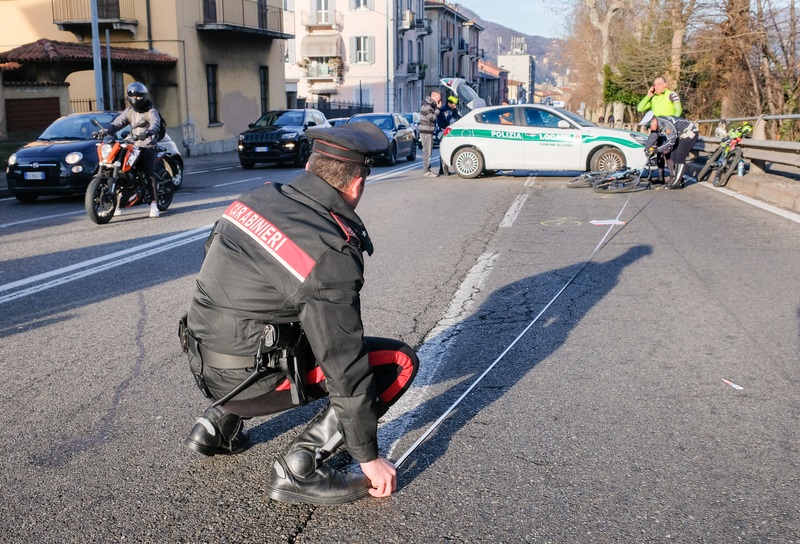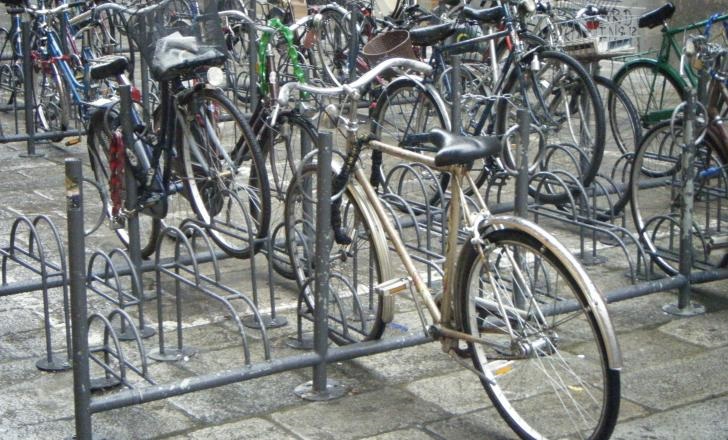Concern is growing in Europe over the safety standards for vulnerable road users such as pedestrians, cyclists and powered two wheeler riders. A total of 169,000 pedestrians, cyclists and users of powered two-wheeled vehicles (PTW) have been killed on European roads since 2001; 15,300 of them in 2009. The figures have been published in the new Road Safety Performance Index (PIN) report and reveal a decrease in the number of deaths by 34% for pedestrians and cyclists, and just 18% for PTW riders compared to
RSSConcern is growing in Europe over the safety standards for vulnerable road users such as pedestrians, cyclists and powered two wheeler riders. A total of 169,000 pedestrians, cyclists and users of powered two-wheeled vehicles (PTW) have been killed on European roads since 2001; 15,300 of them in 2009. The figures have been published in the new Road Safety Performance Index (PIN) report and reveal a decrease in the number of deaths by 34% for pedestrians and cyclists, and just 18% for PTW riders compared to the baseline year of 2001. While the number of total road deaths decreased considerably over the 2001-2010 decade, the number of killed PTW riders actually increased in 13 EU countries. This is a major cause for concern as it runs counter to the safety gains seen for vehicle users in Europe.
The1690 European Commission prioritised PTW users in its Road Safety Policy Orientation last year but is so far struggling to comprehend both the scale of the problem as well as the means required to deal with it. Worse still, although pedestrians and cyclists were identified as a vulnerable group, little was proposed to address the risks they face.
Transport Ministers in December 2010 called for the development of a specific strategy to tackle safety of this target group. Members of the European Parliament (MEPs) are now preparing to adopt a Report on Road Safety, to stress the need for action to reduce road deaths amongst the most vulnerable road users. European Transport Safety Commission (ETSC) executive director Antonio Avenoso explains that experiences from fast progressing countries show that measures exist which are both affordable and effective in saving the lives of many unprotected road users.
The fastest reductions since 2001 among pedestrian deaths were recorded in Portugal, Sweden, Norway and Belgium, and among cyclist deaths in Finland, Lithuania, Slovakia and Latvia. For moped and motorcycle deaths, best reductions have been achieved in Portugal and Latvia, followed by Belgium and Ireland. ETSC is releasing this new data to mark the launch of the UN Decade of Action for Road Safety. Many vulnerable road users are being killed worldwide and the situation in the EU is no exception. Part of the problem is that while road safety features have been introduced that increase the safety of occupants sitting inside vehicles, these same features can sometimes themselves pose risks for vulnerable road users.
Wire rope barriers in particular have been the focus of some scrutiny for while these can protect vehicle occupants they have been directly linked to horrific injuries amongst powered two wheeler users.
Data shows that the biggest risk to vulnerable road users comes from bad driving by vehicle users. While road authorities have attempted to improve safety for vulnerable road users by introducing various measures, these have largely ignored the biggest problem, the issue of bad driving by vehicle users. As a result, safety gains for vulnerable road users have been at best comparatively small and the research reveals that unless the real problem is addressed, that of badly driven vehicles, vulnerable road users will continue to pay a heavy burden.
The
Transport Ministers in December 2010 called for the development of a specific strategy to tackle safety of this target group. Members of the European Parliament (MEPs) are now preparing to adopt a Report on Road Safety, to stress the need for action to reduce road deaths amongst the most vulnerable road users. European Transport Safety Commission (ETSC) executive director Antonio Avenoso explains that experiences from fast progressing countries show that measures exist which are both affordable and effective in saving the lives of many unprotected road users.
The fastest reductions since 2001 among pedestrian deaths were recorded in Portugal, Sweden, Norway and Belgium, and among cyclist deaths in Finland, Lithuania, Slovakia and Latvia. For moped and motorcycle deaths, best reductions have been achieved in Portugal and Latvia, followed by Belgium and Ireland. ETSC is releasing this new data to mark the launch of the UN Decade of Action for Road Safety. Many vulnerable road users are being killed worldwide and the situation in the EU is no exception. Part of the problem is that while road safety features have been introduced that increase the safety of occupants sitting inside vehicles, these same features can sometimes themselves pose risks for vulnerable road users.
Wire rope barriers in particular have been the focus of some scrutiny for while these can protect vehicle occupants they have been directly linked to horrific injuries amongst powered two wheeler users.
Data shows that the biggest risk to vulnerable road users comes from bad driving by vehicle users. While road authorities have attempted to improve safety for vulnerable road users by introducing various measures, these have largely ignored the biggest problem, the issue of bad driving by vehicle users. As a result, safety gains for vulnerable road users have been at best comparatively small and the research reveals that unless the real problem is addressed, that of badly driven vehicles, vulnerable road users will continue to pay a heavy burden.









